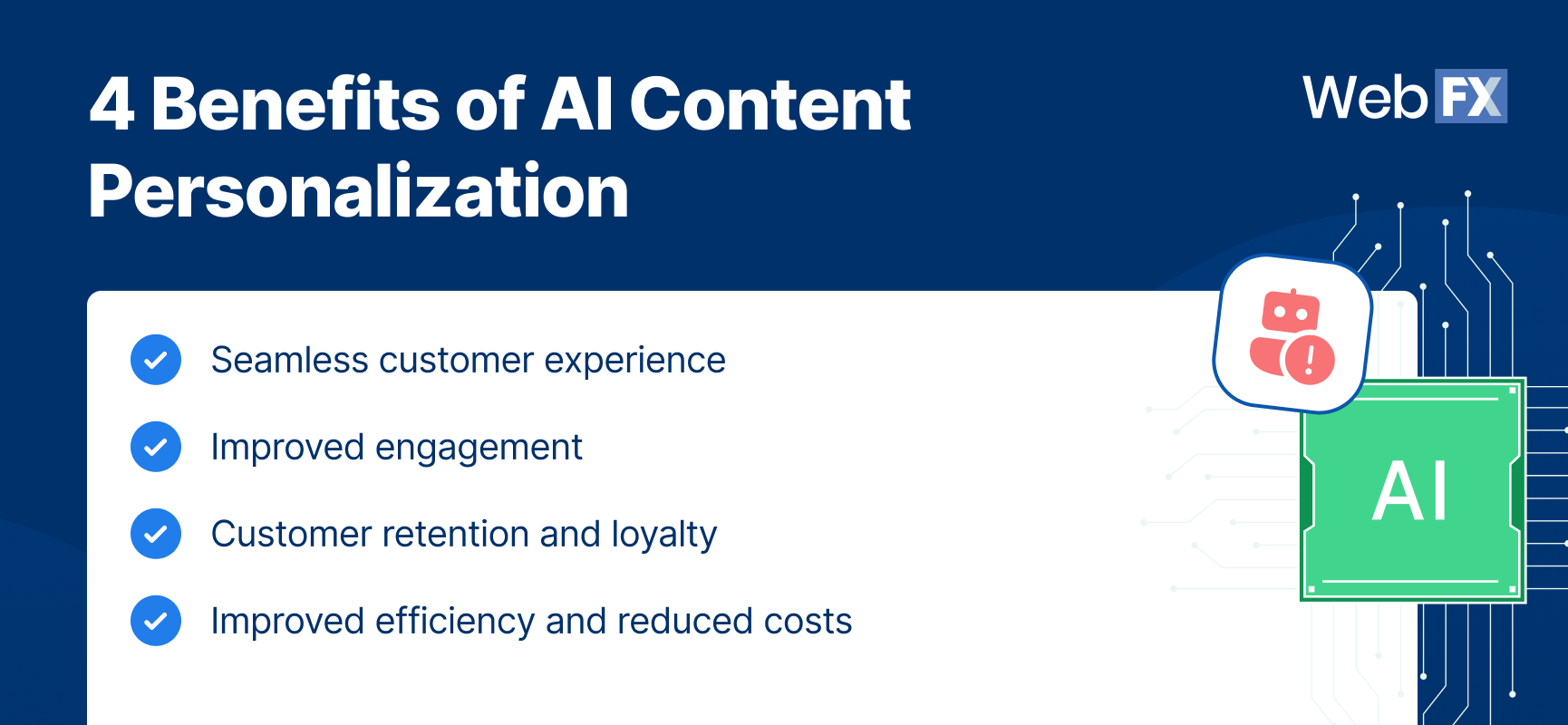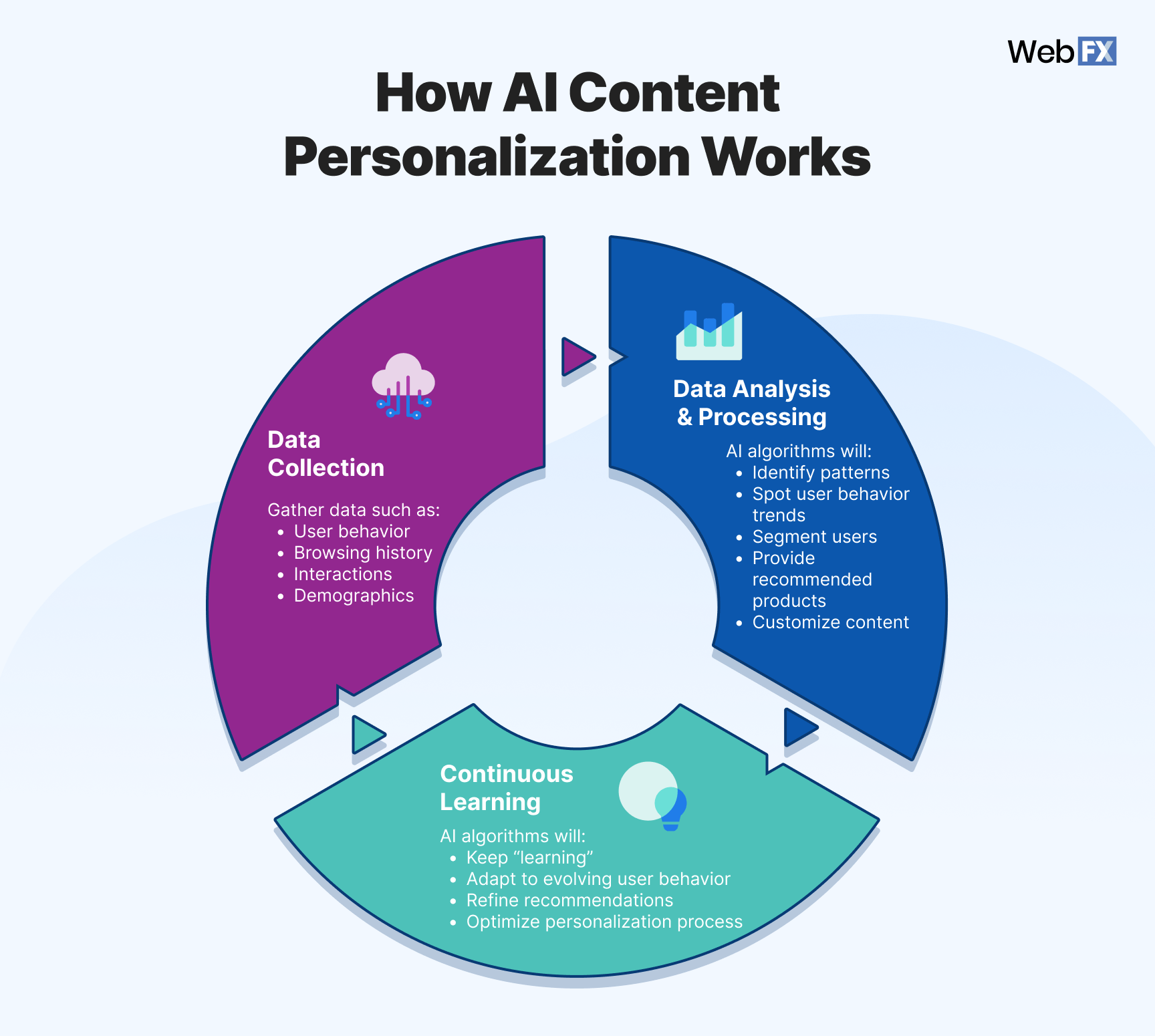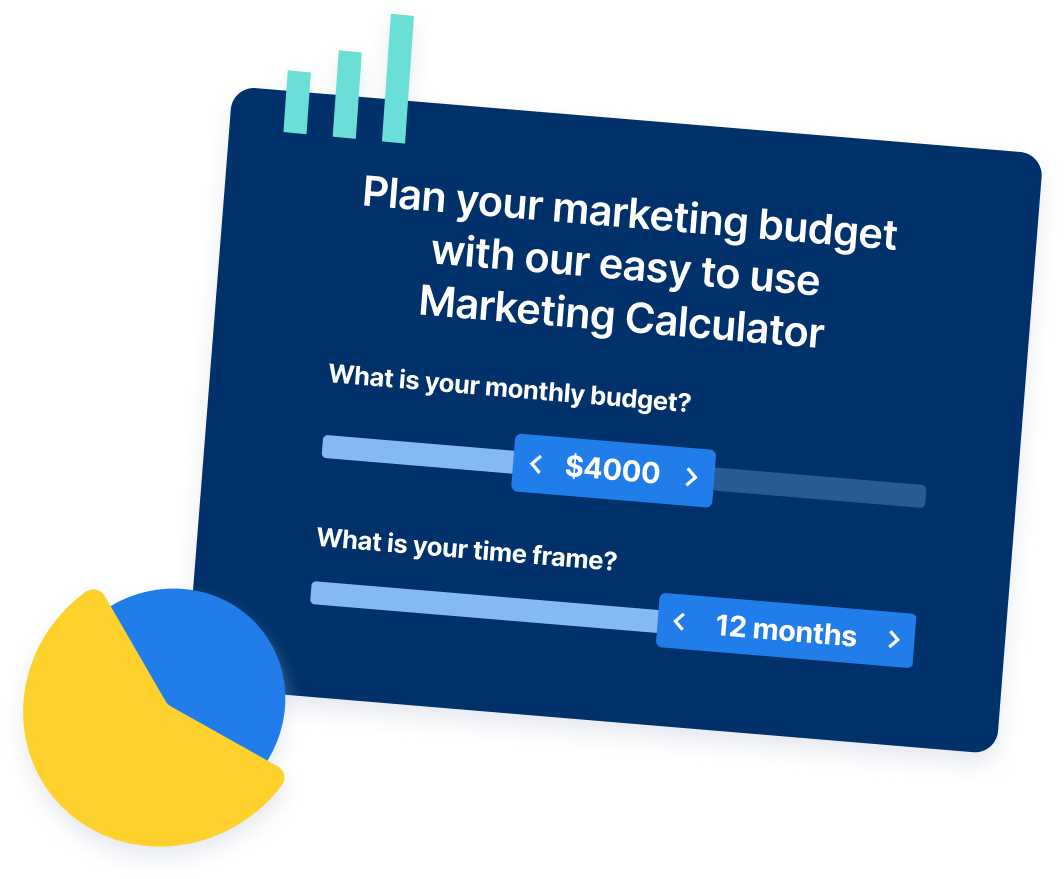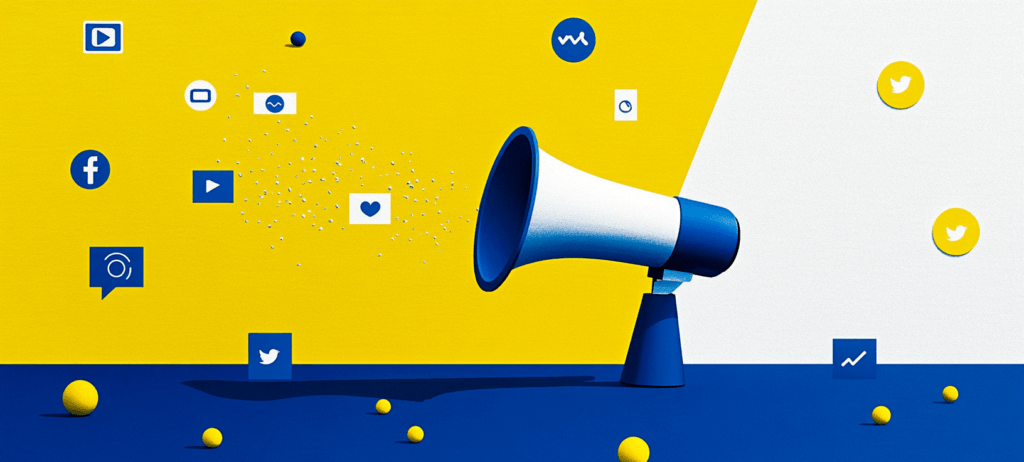- Home
- Blog
- Content Marketing How To Use AI Content Personalization for Your Marketing
How To Use AI Content Personalization for Your Marketing
-
 Published: Mar 7, 2025
Published: Mar 7, 2025
-
 7 min. read
7 min. read
-
 Maria Carpena
Maria Carpena Emerging Trends & Research Writer
Emerging Trends & Research Writer
- Maria is an experienced marketing professional in both B2C and B2B spaces. She’s earned certifications in inbound marketing, content marketing, Google Analytics, and PR. Her favorite topics include digital marketing, social media, and AI. When she’s not immersed in digital marketing and writing, she’s running, swimming, biking, or playing with her dogs.
What is AI content personalization?
AI content personalization is a strategy that uses AI technologies to customize site content or customer experience based on a user’s demographics, psychographics, or behavior.
Have you ever visited an ecommerce site to buy a single product but ended up browsing other related items?
You’re not alone. Thanks to AI, machine learning, and personalization, I’ve spent a few extra minutes on these sites myself looking at suggested products.
AI content personalization is an excellent way to keep customers engaged (case in point: yours truly) and help them find what they need. In fact, 88% of marketers using AI say it helped them personalize the customer journey.
You can also harness the power of AI content personalization to enhance your customer’s experience with your brand. Here are helpful topics so you can get started:
- What is AI content personalization?
- The benefits of AI content personalization
- How AI content personalization works
- 4 AI content personalization applications
- FAQs
What is AI content personalization?
AI content personalization is a strategy that uses AI technologies to customize website content, email copy, or customer experience based on a user’s demographics, psychographics, or behavior.
Its goal is to deliver an engaging experience for prospects and customers to:
- Foster loyalty
- Enhance their customer journey
- Improve conversion rates
What are the benefits of using AI for content personalization?
Using AI content personalization tactics provides benefits for both businesses and their customers. Here are some of them:

Seamless customer experience
When you use AI to understand your customers better, you gain valuable information at each touch point in the customer journey. As a result, you can tailor their customer experience according to their needs.
For example, let’s say you market heavy equipment rentals in different states. AI tools can help you identify a user’s location and search history and then personalize a homepage that shows relevant offerings and locations near them.
Visitors on your site can easily find products and content relevant to their needs and interests, resulting in a satisfying customer experience.
Improved engagement
AI content personalization can keep your users engaged with your brand because you provide information and products they likely need. This process has helped online shoppers stay on ecommerce platforms longer, and users spend more time on streaming sites.
For example, let’s say a travel agency’s digital marketing strategy involves email marketing. Using AI to personalize email content can increase open and click-through rates.
That’s because when email recipients get messages about destinations and travel offers they’ve been eyeing, they’ll likely open them. AI can also gather behavioral insights, such as:
- Emails opened
- Links clicked
- Offers and pages browsed
- Past purchases
These insights can inform how you can enhance subject lines that entice them to engage with your email.
Customer retention and loyalty
Another benefit your business can get from AI content personalization is customer retention and loyalty.
Personalizing content and messages for your customers will make them feel understood and valued. In fact, 75% of U.S. consumers say they’ll likely be more loyal to brands that understand them personally.
Couple that with a seamless experience on your site, and they will likely remain customers and become advocates of your business.
Improved efficiency and reduced costs
Instead of manually processing data points or creating customer segments, you can use AI to automate parts of your personalization process.
This increases efficiency because it reduces manual work. You can then assign your team members to work on other high-value strategies that contribute to your ROI.
Enriched customer insights
Using AI for personalization is like a gift that keeps on giving. It lets you catch new and evolving customer preferences, behavior, and trends.
As you gather more insights about your customers and prospects, you will have more information to guide your strategy, personalization efforts, and customer segmentation.
How does AI content personalization work?
An AI-powered content personalization process typically involves the following steps:
In general, it uses machine learning, natural language processing (NLP), and generative AI to provide a personalized experience. Let’s break down the process:

1. Data collection
AI content personalization starts with collecting customer data, including:
- User behavior, such as the pages or products they look at and how long they stay on your website
- Browsing and purchase history
- Interactions, such as downloading gated content on your site or any interactions with your brand on social media
- Demographics, such as age, income, educational level, location, and language
- Other contextual data like device used, operating system, or browser
This step usually includes merging the collected data with first- and third-party data.
2. Data analysis and processing
With the help of machine learning, NLP, and generative AI, AI algorithms will analyze and process your data. They will:
- Identify patterns and user behavior trends
- Segment users according to behaviors, demographics, interactions, or other characteristics that make sense
- Provide recommended products, offerings, or content according to the user’s preferences, behaviors, or segment
- Tailors content on a web page or app based on a user’s profile or segment
3. Continuous learning
AI algorithms will continue to gather data as users interact with your brand through various channels to learn evolving behaviors or new preferences. As AI algorithms continue learning, they will refine recommendations, responses, and customer segments to optimize their personalization process.
4 AI content personalization applications
You can implement AI content personalization strategies on your website or app to provide an engaging user experience. Here are different applications of AI content personalization:
- Intelligent customer segmentation
- Predictive personalization
- Dynamic pricing
- Tailored messages and content
Intelligent customer segmentation
Traditional customer segmentation typically segregates them according to specific demographics, psychographics, or behaviors.
When you use AI to segment your customers, you uncover new groups based on a combination of data. Instead of a simple group of people from a specific location, you also can create segments that combine location, behavior, and historical purchase data.
Predictive personalization
Another handy application of AI is predictive personalization, which provides an intuitive experience for customers.
How? AI can analyze a user’s (or similar users’) historical data to anticipate what they’ll need next, even before they express interest in it.
As a result, you can recommend relevant products or content that a user might find helpful!
Dynamic pricing
Another handy application of AI content personalization is dynamic pricing, a strategy that adjusts pricing according to various factors. Industries like airlines, travel, and events adjust prices based on demand, proximity to an event or flight date, and other factors.
Tailored messages and content
Today, personalized messages go beyond “Hello, [first name].” With the power of AI algorithms, brands can send custom emails and messages based on several factors, such as:
- The items they left on their cart
- Their purchase history
- Interactions and behavior on your site
Using AI, brands can analyze data at scale to better understand their customers’ behavior and personalize messages and content that resonate with them.
FAQs on AI content personalization
Let’s answer some of your questions about using AI for content personalization here.
What are some examples of AI content personalization?
Here are some popular examples of AI content personalization:
Starbucks: Customized menu suggestions
Starbucks has an AI-powered platform called Deep Brew. Aside from helping the brand manage inventory and optimize resource allocation, it also powers the coffee chain’s personalized user experiences. This AI platform processes large amounts of data to personalize marketing messages and menu recommendations to app users.
Netflix: Personalized homepage and messages
Netflix uses AI algorithms to personalize users’ homepages, helping them find movies, shows, and games they’d like based on data. The streaming platform also uses AI to personalize messages and in-app notifications to minimize the time users spend looking for what to watch.
Expedia: Dynamic pricing
Expedia, an online travel agency, uses AI to implement dynamic pricing strategies. Using AI algorithms that analyze customer demand, competition, and weather, it adjusts pricing to competitive rates to entice users to convert.
What are AI content personalization best practices?
To reap the benefits of AI content personalization, brands must implement best practices, which include the following:
- Employ good data hygiene techniques. AI systems work well when you use clean first- and third-party data. Collect and cleanse your data and audit it regularly.
- Disclose how you’re using and processing customer data. Transparency is essential to earn your customers’ trust. Tell your customers the data you’re collecting and using AI to process it.
- Safeguard your customers’ data. Employ good data governance practices to keep your customer’s data secure.
- Use AI ethically and responsibly. Audit your AI systems regularly to retrain and optimize their content personalization functions. Have processes to mitigate bias and discrimination, and ensure your teams adhere to AI ethical guidelines.
- Have a clear personalization roadmap. Plan your AI content personalization roadmap well before training your AI system. Doing so ensures your strategies are aligned with your business goals.
What are future trends to look out for in the AI content personalization realm?
Two of the biggest trends in AI content personalization are hyper-personalization and omnichannel personalization.
Hyper-personalization uses AI to process real-time data to provide a unique user experience. Brands can deliver custom recommendations for each user instead of delivering similar messages and product recommendations to users within the same segment.
Meanwhile, omnichannel personalization is a strategy that provides consistent, personalized user experience across various channels — from the mobile app and website to email and in-person. AI integrates data from various customer touchpoints to create a user journey that shows personalized content and messages.
Delight your customers with AI content personalization
You can use AI to provide your audience with a seamless, personalized experience. If maintaining AI systems is a massive task for your team, consider partnering with WebFX for AI services.
Our team will take the time to understand your business, goals, and customers to create an AI content personalization roadmap that will drive your desired results. You’ll get access to our proprietary platform, RevenueCloudFX, which can monitor and measure the success of your AI-powered personalization strategies.
Ready to offer personalized user experiences that foster customer loyalty? Contact us online or call us at 888-601-5359 to speak with a strategist!
-
 Maria is an experienced marketing professional in both B2C and B2B spaces. She’s earned certifications in inbound marketing, content marketing, Google Analytics, and PR. Her favorite topics include digital marketing, social media, and AI. When she’s not immersed in digital marketing and writing, she’s running, swimming, biking, or playing with her dogs.
Maria is an experienced marketing professional in both B2C and B2B spaces. She’s earned certifications in inbound marketing, content marketing, Google Analytics, and PR. Her favorite topics include digital marketing, social media, and AI. When she’s not immersed in digital marketing and writing, she’s running, swimming, biking, or playing with her dogs. -

WebFX is a full-service marketing agency with 1,100+ client reviews and a 4.9-star rating on Clutch! Find out how our expert team and revenue-accelerating tech can drive results for you! Learn more
Try our free Marketing Calculator
Craft a tailored online marketing strategy! Utilize our free Internet marketing calculator for a custom plan based on your location, reach, timeframe, and budget.
Plan Your Marketing Budget
Table of Contents
- What is AI Content Personalization?
- What Are the Benefits of Using AI for Content Personalization?
- Seamless Customer Experience
- Improved Engagement
- Customer Retention and Loyalty
- Improved Efficiency and Reduced Costs
- Enriched Customer Insights
- How Does AI Content Personalization Work?
- 1. Data Collection
- 2. Data Analysis and Processing
- 3. Continuous Learning
- 4 AI Content Personalization Applications
- Intelligent Customer Segmentation
- Predictive Personalization
- Dynamic Pricing
- Tailored Messages and Content
- FAQs on AI Content Personalization
- What Are Some Examples of AI Content Personalization?
- What Are AI Content Personalization Best Practices?
- What Are Future Trends to Look out for in the AI Content Personalization Realm?

Looking for More?
Get expert ideas, industry updates, case studies, and more straight to your inbox to help you level up and get ahead.
"*" indicates required fields

Proven Marketing Strategies
Try our free Marketing Calculator
Craft a tailored online marketing strategy! Utilize our free Internet marketing calculator for a custom plan based on your location, reach, timeframe, and budget.
Plan Your Marketing Budget





